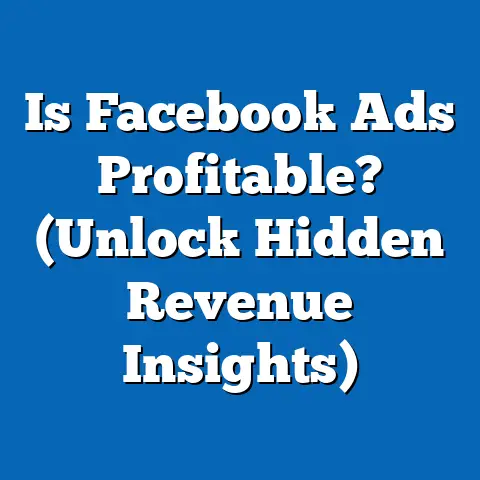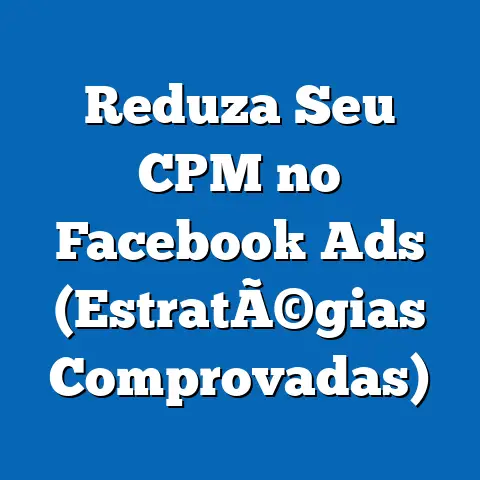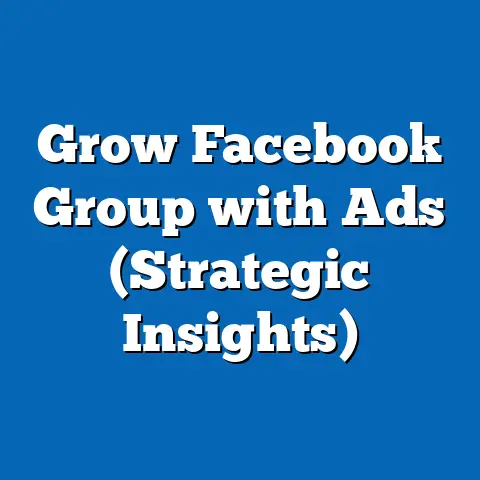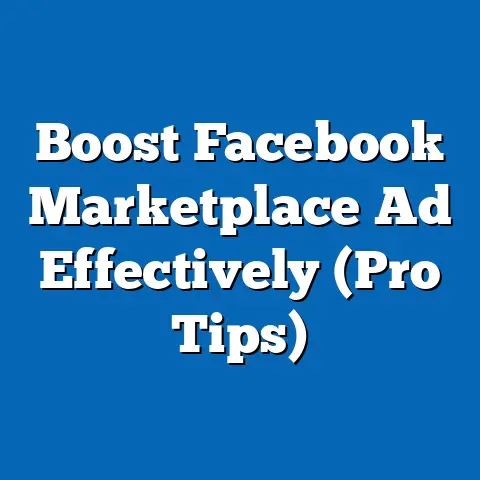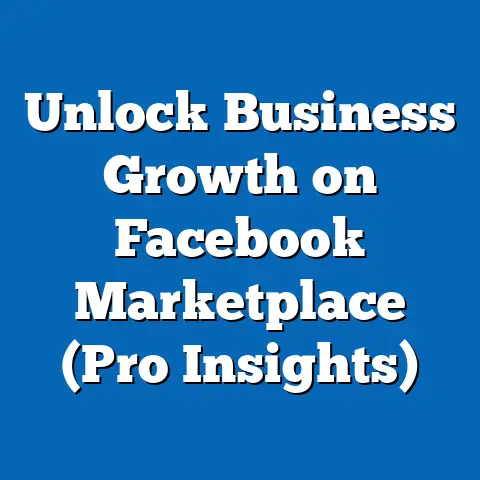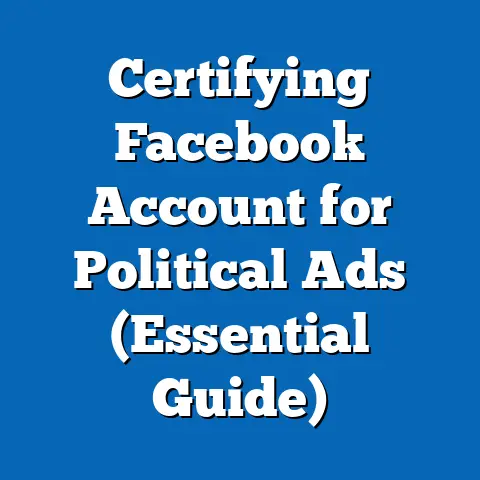Reclaim Investment from Facebook Ads (Proven Strategies)
Have you ever felt like your Facebook ad budget is disappearing into a black hole, with little to show for it? I know I have! I remember working with a local bakery a few years back. They were so excited to launch their first Facebook ad campaign to promote their new line of gluten-free pastries. They poured their heart and soul (and a significant chunk of their marketing budget) into beautiful ads, but the results were… underwhelming. They saw some likes and shares, but hardly any actual customers walking through the door.
It was a frustrating experience for everyone involved. That’s when I realized that simply throwing money at Facebook ads isn’t enough. You need a strategic approach, a deep understanding of the platform, and a willingness to constantly analyze and optimize.
Since then, I’ve dedicated myself to mastering the art and science of Facebook advertising. I’ve worked with countless businesses, from small startups to established enterprises, helping them unlock the true potential of this powerful platform. And the good news is, it’s totally achievable!
Facebook advertising, when done right, can be an incredibly effective way to reach your target audience, drive traffic to your website, and ultimately, boost your bottom line. One of my favorite success stories involves a small e-commerce business selling handmade jewelry. By implementing a few key strategies – laser-focused targeting, compelling ad copy, and rigorous A/B testing – we were able to increase their sales by a whopping 200% within just six months!
That’s the kind of ROI we’re aiming for.
In this article, I’m going to share with you the proven strategies I’ve learned over the years to help you reclaim your investment from Facebook ads and turn your campaigns into profitable engines for growth. We’ll dive deep into everything from setting clear objectives and understanding your audience to crafting compelling ad content and mastering budget management.
Let’s get started and transform your Facebook ad strategy from a cost center to a profit center!
1. Understanding Facebook Ads
Before we dive into the nitty-gritty of optimization, let’s make sure we’re all on the same page about the fundamentals of Facebook advertising.
1.1 What Are Facebook Ads?
Facebook ads are paid advertisements that appear on Facebook, Instagram (which is owned by Meta, Facebook’s parent company), Messenger, and the Audience Network (a network of websites and apps that partner with Facebook to display ads). These ads come in various formats, including:
- Image Ads: Single image with accompanying text. Simple but effective for showcasing products or services.
- Video Ads: Engaging videos that capture attention and tell a story. Great for demonstrating product features or building brand awareness.
- Carousel Ads: Multiple images or videos that users can swipe through. Ideal for showcasing a range of products or highlighting different features of a single product.
- Collection Ads: Visually immersive ads that feature a hero video or image, along with a collection of products. Perfect for e-commerce businesses looking to drive sales.
- Instant Experience Ads (formerly Canvas Ads): Full-screen, mobile-optimized experiences that allow users to interact with your brand in a dynamic and engaging way.
- Lead Ads: Ads that allow users to submit their contact information directly through the ad, without leaving Facebook. Excellent for lead generation campaigns.
- Dynamic Ads: Ads that automatically promote relevant products to people who have expressed interest on your website, in your app, or elsewhere on the internet.
The beauty of Facebook ads lies in their unparalleled targeting capabilities. Facebook’s algorithm uses a vast amount of data to understand users’ interests, behaviors, and demographics, allowing advertisers to reach highly specific audiences with tailored messages.
I remember when Facebook first introduced custom audiences. It was a game-changer! Suddenly, we could upload our customer lists and target them directly on Facebook. This allowed us to create highly personalized ads that resonated with our existing customers and drove repeat business.
Understanding the different ad formats and targeting options is crucial for crafting effective campaigns that resonate with your target audience and drive results.
1.2 The Importance of Facebook Ads for Businesses
In today’s digital landscape, Facebook ads are an indispensable tool for businesses of all sizes. Here’s why:
- Massive Reach: Facebook has over 2.9 billion monthly active users, making it the largest social media platform in the world. This provides businesses with unparalleled access to a vast and diverse audience.
- Precise Targeting: As mentioned earlier, Facebook’s advanced targeting capabilities allow you to reach highly specific audiences based on demographics, interests, behaviors, and more. This ensures that your ads are seen by the people who are most likely to be interested in your products or services.
- Cost-Effectiveness: Compared to traditional advertising methods like TV or print, Facebook ads are incredibly cost-effective. You can set your own budget and control how much you spend on each campaign.
- Measurable Results: Facebook provides detailed analytics that allow you to track the performance of your ads in real-time. This allows you to see exactly how your ads are performing and make adjustments as needed to optimize your results.
- Brand Building: Facebook ads can be used to build brand awareness and establish your business as a leader in your industry. By creating engaging and informative ads, you can connect with your audience and build a loyal following.
According to Statista, Facebook’s advertising revenue in 2023 was estimated to be around $116.6 billion. This demonstrates the immense value that businesses place on Facebook as an advertising platform.
I’ve seen firsthand how Facebook ads can transform a business. I worked with a local bookstore that was struggling to compete with online retailers. By running targeted Facebook ads promoting local author events and book signings, we were able to drive a significant increase in foot traffic and sales. It was amazing to see how a well-executed Facebook ad campaign could revitalize a struggling business.
Key Takeaway: Facebook ads offer businesses a powerful and cost-effective way to reach their target audience, drive traffic, and boost their bottom line. Understanding the platform’s ad formats and targeting capabilities is essential for creating successful campaigns.
Next Step: Start exploring the different ad formats and targeting options available on Facebook. Familiarize yourself with the Facebook Ads Manager and begin brainstorming ideas for your own campaigns.
2. Setting Clear Objectives
Before you launch any Facebook ad campaign, it’s crucial to define your objectives. What do you want to achieve with your ads? Are you looking to increase brand awareness, generate leads, drive sales, or something else entirely?
2.1 Defining Goals for Your Facebook Ad Campaigns
Setting clear and specific goals is the foundation of any successful advertising campaign. Vague goals like “increase website traffic” are not enough. You need to set SMART goals:
- Specific: Your goal should be clearly defined and focused. Instead of “increase website traffic,” try “increase website traffic from the US by 20%.”
- Measurable: You should be able to track your progress towards your goal. Use metrics like website traffic, conversion rates, and ROI to measure your success.
- Achievable: Your goal should be realistic and attainable. Don’t set a goal that is impossible to reach with your current resources.
- Relevant: Your goal should be aligned with your overall business objectives. Make sure that your Facebook ad campaigns are supporting your broader marketing and sales efforts.
- Time-bound: Your goal should have a specific deadline. This will help you stay focused and motivated.
Here are some examples of common goals for Facebook ad campaigns:
- Brand Awareness: Increase brand recognition and reach among your target audience.
- Example: Increase brand awareness among women aged 25-34 in the US by 15% within 3 months.
- Lead Generation: Collect contact information from potential customers.
- Example: Generate 100 qualified leads per month through Facebook lead ads.
- Sales Conversion: Drive sales of your products or services.
- Example: Increase online sales by 10% within 6 months through targeted Facebook ad campaigns.
- Website Traffic: Drive traffic to your website.
- Example: Increase website traffic from Facebook ads by 25% within 1 month.
- App Installs: Encourage users to download your mobile app.
- Example: Acquire 500 new app installs per week through Facebook app install ads.
- Event Attendance: Promote attendance at your events.
- Example: Increase attendance at our upcoming webinar by 50% through Facebook event ads.
- Example: Increase brand awareness among women aged 25-34 in the US by 15% within 3 months.
- Example: Generate 100 qualified leads per month through Facebook lead ads.
- Example: Increase online sales by 10% within 6 months through targeted Facebook ad campaigns.
- Example: Increase website traffic from Facebook ads by 25% within 1 month.
- Example: Acquire 500 new app installs per week through Facebook app install ads.
- Example: Increase attendance at our upcoming webinar by 50% through Facebook event ads.
When I first started running Facebook ads, I made the mistake of not setting clear goals. I was just trying to get as many clicks and likes as possible. But without a specific objective in mind, it was impossible to measure my success or optimize my campaigns. I quickly learned that setting SMART goals is essential for driving meaningful results.
2.2 Aligning Business Objectives with Facebook Ad Strategies
Once you’ve defined your goals, you need to align your Facebook ad strategies with your overall business objectives. This means tailoring your ad creative, targeting, and bidding strategies to achieve your specific goals.
For example, if your business objective is to increase brand awareness, you might focus on running video ads that tell your brand’s story and reach a broad audience. You could use the “Reach” or “Brand Awareness” campaign objective in Facebook Ads Manager. Your key metrics would be reach, impressions, and video views.
On the other hand, if your business objective is to drive sales, you might focus on running carousel ads that showcase your products and target users who have previously visited your website or expressed interest in your products. You would likely use the “Conversions” campaign objective and focus on metrics like conversion rate, cost per conversion, and ROI.
Here’s a case study to illustrate this point:
Company: A small e-commerce business selling handmade candles.
Business Objective: Increase online sales by 15% within 3 months.
Facebook Ad Strategy:
- Campaign Objective: Conversions
- Targeting:
- Custom Audience: Users who have visited the website in the past 30 days.
- Lookalike Audience: Users who are similar to the company’s existing customers.
- Interest-Based Targeting: Users interested in candles, home decor, and aromatherapy.
- Ad Creative: Carousel ads showcasing the different candle scents and highlighting customer reviews.
- Bidding Strategy: Cost per conversion.
- Custom Audience: Users who have visited the website in the past 30 days.
- Lookalike Audience: Users who are similar to the company’s existing customers.
- Interest-Based Targeting: Users interested in candles, home decor, and aromatherapy.
Results: The company was able to increase online sales by 18% within 3 months, exceeding their initial goal.
I remember working with a client who was struggling to generate leads for their software business. They were running Facebook ads, but they weren’t seeing any results. After analyzing their campaigns, I realized that they were targeting the wrong audience and using generic ad copy. By refining their targeting and crafting compelling ad copy that spoke directly to their target audience’s pain points, we were able to significantly increase their lead generation.
Key Takeaway: Setting SMART goals and aligning your Facebook ad strategies with your overall business objectives is essential for driving meaningful results.
Next Step: Review your business objectives and define specific, measurable, achievable, relevant, and time-bound goals for your Facebook ad campaigns.
3. Audience Targeting Techniques
One of the most powerful features of Facebook advertising is its ability to target highly specific audiences. By understanding your target audience and leveraging Facebook’s advanced targeting options, you can ensure that your ads are seen by the people who are most likely to be interested in your products or services.
3.1 Understanding Your Target Audience
Before you start creating your Facebook ad campaigns, it’s crucial to understand your target audience. Who are you trying to reach? What are their interests, behaviors, and demographics?
Here are some questions to consider when defining your target audience:
- Demographics: What is their age, gender, location, education level, and income?
- Interests: What are their hobbies, passions, and interests?
- Behaviors: What are their online and offline behaviors? What websites do they visit? What purchases do they make?
- Pain Points: What problems are they trying to solve? What needs are they trying to fulfill?
- Motivations: What motivates them to buy your products or services?
Facebook provides several tools to help you gather data about your target audience:
- Facebook Insights: This tool provides demographic and engagement data about your Facebook page followers. You can use this data to understand who is already interested in your brand and what content resonates with them.
- Audience Insights: This tool provides detailed information about Facebook users, including their demographics, interests, behaviors, and more. You can use this tool to research potential target audiences and identify new targeting opportunities.
- Website Analytics: Tools like Google Analytics can provide valuable insights into the demographics, interests, and behaviors of your website visitors. You can use this data to create custom audiences on Facebook.
I remember using Facebook Audience Insights to research a new target audience for a client who was selling organic baby food. By analyzing the data, I discovered that their target audience was not only interested in organic food but also in sustainable living, parenting tips, and healthy recipes. This insight allowed me to create highly targeted ads that resonated with their audience and drove a significant increase in sales.
3.2 Advanced Targeting Options
Facebook offers a wide range of targeting options that allow you to reach highly specific audiences:
- Demographic Targeting: Target users based on age, gender, location, education level, and income.
- Interest-Based Targeting: Target users based on their interests, hobbies, and passions.
- Behavioral Targeting: Target users based on their online and offline behaviors, such as their purchase history, website visits, and mobile app usage.
- Custom Audiences: Target users who have previously interacted with your business, such as website visitors, email subscribers, and existing customers. You can upload your customer lists to Facebook and create custom audiences based on this data.
- Lookalike Audiences: Target users who are similar to your existing customers. Facebook will analyze your customer data and identify users who share similar characteristics. This is a powerful way to reach new customers who are likely to be interested in your products or services.
- Detailed Targeting Expansion: This option allows Facebook to expand your targeting beyond your initial selections to reach more people who are likely to convert. It can be helpful when you’re looking to scale your campaigns.
Here’s an example of how effective targeting can lead to increased ROI:
Company: An online retailer selling running shoes.
Targeting Strategy:
- Custom Audience: Users who have viewed running shoes on the website in the past 30 days.
- Lookalike Audience: Users who are similar to the company’s existing customers who have purchased running shoes.
- Interest-Based Targeting: Users interested in running, marathon training, and fitness.
Results: The company saw a 30% increase in conversion rates and a 20% decrease in cost per acquisition.
I once worked with a local gym that was struggling to attract new members. By using Facebook’s detailed targeting options, we were able to target people who lived within a 5-mile radius of the gym, were interested in fitness and weight loss, and had recently visited a competitor’s website. This highly targeted campaign resulted in a significant increase in new gym memberships.
Key Takeaway: Understanding your target audience and leveraging Facebook’s advanced targeting options is crucial for ensuring that your ads are seen by the people who are most likely to be interested in your products or services.
Next Step: Use Facebook Insights and Audience Insights to research your target audience. Experiment with different targeting options to see what works best for your business.
4. Crafting Compelling Ad Content
Even with the most precise targeting in the world, your Facebook ads will fall flat if your ad content isn’t compelling. Your ad copy, visuals, and call to action need to grab attention, resonate with your audience, and persuade them to take action.
4.1 Elements of High-Performing Ad Copy
High-performing ad copy is clear, concise, and compelling. It speaks directly to your target audience’s needs and desires, and it includes a strong call to action that tells them exactly what you want them to do.
Here are some key elements of effective ad copy:
- Headline: Your headline is the first thing people will see, so it needs to be attention-grabbing and relevant. Use strong keywords and highlight the benefits of your product or service.
- Body Text: Your body text should provide more details about your product or service and explain why it’s the best solution for your target audience’s needs. Use clear and concise language, and focus on the benefits, not just the features.
- Call to Action (CTA): Your CTA tells people what you want them to do next. Use strong action verbs like “Shop Now,” “Learn More,” or “Get Started.”
- Relevance: Make sure your ad copy is relevant to your target audience’s interests and needs. Use language that resonates with them and addresses their pain points.
- Clarity: Your ad copy should be easy to understand. Avoid jargon and technical terms that your target audience may not be familiar with.
- Urgency: Create a sense of urgency by highlighting limited-time offers or deadlines. This can encourage people to take action sooner rather than later.
- Social Proof: Include social proof, such as customer reviews or testimonials, to build trust and credibility.
Here are some examples of successful ad copy and what makes them stand out:
Example 1: Shopify
- Headline: Start Your Free Trial Today
- Body Text: Build your online store with Shopify. No credit card required. Get started today!
- CTA: Start Free Trial
What Makes It Stand Out: The headline is clear and concise, and the body text highlights the key benefit (no credit card required). The CTA is strong and actionable.
Example 2: Grammarly
- Headline: Improve Your Writing with Grammarly
- Body Text: Grammarly helps you write clearly and confidently. Try it for free today!
- CTA: Get Grammarly
What Makes It Stand Out: The headline highlights the problem that Grammarly solves (improving writing), and the body text emphasizes the benefit (writing clearly and confidently). The CTA is simple and direct.
I remember working with a client who was selling online courses. Their initial ad copy was very generic and didn’t speak to their target audience’s specific needs. By rewriting their ad copy to focus on the benefits of the courses and address their target audience’s pain points, we were able to significantly increase their conversion rates.
4.2 A/B Testing and Optimization
A/B testing, also known as split testing, is the process of comparing two versions of an ad to see which one performs better. You can A/B test different elements of your ad, such as the headline, body text, image, or CTA.
Here’s how A/B testing works:
- Create Two Versions of Your Ad: Change one element of your ad, such as the headline.
- Run the Ads Simultaneously: Show both versions of your ad to the same target audience at the same time.
- Track the Results: Monitor the performance of each ad and see which one generates more clicks, conversions, or other desired outcomes.
- Implement the Winner: Use the winning ad in your campaigns and continue to test other elements to further optimize your results.
A/B testing is an essential part of optimizing your Facebook ad campaigns. By constantly testing different elements of your ads, you can identify what works best for your target audience and improve your overall performance.
Here’s some data on how optimization can lead to improved ad performance:
- According to a study by HubSpot, A/B testing can increase conversion rates by up to 49%.
- A study by MarketingSherpa found that A/B testing can improve email open rates by up to 40%.
I always tell my clients that A/B testing is not a one-time thing. It’s an ongoing process. You should constantly be testing different elements of your ads to see what works best for your target audience.
I once worked with a client who was running Facebook ads to promote a new product launch. We A/B tested different headlines and found that a headline that included a specific benefit of the product generated significantly more clicks than a generic headline. By implementing the winning headline, we were able to increase their click-through rate by 25%.
Key Takeaway: Crafting compelling ad content is essential for grabbing attention, resonating with your audience, and persuading them to take action. A/B testing is a crucial part of optimizing your ads and improving your overall performance.
Next Step: Analyze your existing Facebook ads and identify areas for improvement. Start A/B testing different elements of your ads to see what works best for your target audience.
5. Budget Management and Bidding Strategies
One of the biggest challenges for Facebook advertisers is managing their budget effectively and choosing the right bidding strategy. You want to get the most bang for your buck and maximize your ROI.
5.1 Setting Your Ad Budget
Facebook offers two main budgeting options:
- Daily Budget: This is the average amount you’re willing to spend per day on your ad campaign. Facebook will try to spend this amount each day, but it may spend slightly more or less depending on the performance of your ads.
- Lifetime Budget: This is the total amount you’re willing to spend on your ad campaign over its entire duration. Facebook will try to spread your budget evenly over the duration of your campaign, but it may spend more or less on certain days depending on the performance of your ads.
When setting your ad budget, consider the following factors:
- Campaign Objectives: What are you trying to achieve with your campaign? If you’re looking to generate leads or drive sales, you may need to spend more than if you’re just trying to increase brand awareness.
- Target Audience Size: The larger your target audience, the more you’ll need to spend to reach them.
- Competition: If you’re advertising in a competitive industry, you may need to spend more to stand out from the crowd.
- Ad Relevance: The more relevant your ads are to your target audience, the more likely they are to click on them, which can lower your costs.
- Bidding Strategy: The bidding strategy you choose can also affect your budget.
Here’s how to allocate your budget based on campaign objectives and audience size:
- Brand Awareness: Start with a lower budget and focus on reaching a broad audience.
- Lead Generation: Allocate a moderate budget and focus on targeting a specific audience with compelling lead ads.
- Sales Conversion: Allocate a higher budget and focus on targeting users who have previously interacted with your business or expressed interest in your products.
I always recommend starting with a smaller budget and gradually increasing it as you see positive results. This allows you to test different targeting options and ad creative without breaking the bank.
5.2 Effective Bidding Strategies
Facebook offers several bidding strategies to help you control how much you spend on your ads:
- Cost Per Click (CPC): You pay each time someone clicks on your ad. This is a good option if you’re trying to drive traffic to your website.
- Cost Per Mille (CPM): You pay for every 1,000 impressions your ad receives. This is a good option if you’re trying to increase brand awareness.
- Cost Per Conversion (CPA): You pay each time someone takes a desired action, such as making a purchase or filling out a form. This is a good option if you’re trying to generate leads or drive sales.
- Lowest Cost: Facebook will automatically bid to get you the most results for your budget. This is a good option if you’re new to Facebook advertising or you don’t have a lot of time to manage your bids.
- Target Cost: You set a target cost for each result, and Facebook will try to get you results at or below that cost. This is a good option if you have a specific cost per acquisition (CPA) goal in mind.
- Value Optimization: This bidding strategy is designed to maximize the value of your conversions. Facebook will target users who are most likely to make high-value purchases.
Here’s how to choose the right bidding strategy based on your campaign goals and budget:
- Brand Awareness: CPM or Reach
- Lead Generation: CPA or Lowest Cost
- Sales Conversion: CPA or Value Optimization
- Website Traffic: CPC or Lowest Cost
I’ve found that using the “Lowest Cost” bidding strategy can be a good starting point for many campaigns. It allows Facebook to automatically optimize your bids and get you the most results for your budget. However, as you gain more experience, you may want to experiment with other bidding strategies to see if you can improve your results.
I worked with a client who was running a lead generation campaign using the CPC bidding strategy. They were getting a lot of clicks, but they weren’t generating many leads. By switching to the CPA bidding strategy, we were able to significantly increase their lead generation while lowering their cost per lead.
Key Takeaway: Managing your budget effectively and choosing the right bidding strategy is crucial for maximizing your ROI on Facebook ads.
Next Step: Review your current Facebook ad budgets and bidding strategies. Experiment with different options to see what works best for your business.
6. Measuring Success and Analyzing Results
The final piece of the puzzle is measuring your success and analyzing your results. You need to track the right key performance indicators (KPIs) and use the data to continuously improve your campaigns.
6.1 Key Performance Indicators (KPIs) for Facebook Ads
Key Performance Indicators (KPIs) are metrics that help you track the performance of your Facebook ad campaigns and measure your progress towards your goals. The most important KPIs to track will depend on your campaign objectives.
Here are some of the most common KPIs for Facebook ads:
- Reach: The number of unique people who saw your ad.
- Impressions: The number of times your ad was displayed.
- Click-Through Rate (CTR): The percentage of people who saw your ad and clicked on it. (Clicks / Impressions) x 100
- Cost Per Click (CPC): The average cost you paid for each click on your ad.
- Conversion Rate: The percentage of people who clicked on your ad and completed a desired action, such as making a purchase or filling out a form.
- Cost Per Conversion (CPA): The average cost you paid for each conversion.
- Return on Ad Spend (ROAS): The amount of revenue you generated for every dollar you spent on advertising. (Revenue / Ad Spend)
- Relevance Score: A score from 1 to 10 that measures how relevant your ad is to your target audience. A higher relevance score can lead to lower costs and better performance.
- Frequency: The average number of times each person saw your ad.
It’s important to track these KPIs over time to see how your campaigns are performing and identify areas for improvement. You should also compare your KPIs to industry benchmarks to see how you stack up against your competitors.
Here are some industry benchmarks for Facebook ad KPIs:
- Average CTR: 0.90%
- Average Conversion Rate: 9.21%
- Average CPA: $16.84
These are just averages, so your results may vary depending on your industry, target audience, and ad creative.
I always tell my clients that tracking and analyzing data is not a one-time thing. It’s an ongoing process. You should constantly be monitoring your KPIs and making adjustments to your campaigns as needed to optimize your results.
6.2 Tools for Analyzing Facebook Ad Performance
Facebook provides several tools to help you analyze your ad performance:
- Facebook Ads Manager: This is the primary tool for creating, managing, and analyzing your Facebook ad campaigns. It provides detailed data on your reach, impressions, clicks, conversions, and more.
- Facebook Analytics: This tool allows you to track user behavior on your website and in your app. You can use this data to understand how people are interacting with your business and optimize your marketing efforts.
- Google Analytics: This is a powerful web analytics tool that allows you to track website traffic, user behavior, and conversions. You can integrate Google Analytics with your Facebook ad campaigns to get a more complete picture of your performance.
- Third-Party Analytics Tools: There are many third-party analytics tools available that can provide more advanced insights into your Facebook ad performance. These tools often offer features like automated reporting, competitive analysis, and predictive analytics.
Here’s a step-by-step guide on how to interpret data and make informed decisions:
- Identify Your Key KPIs: Determine which KPIs are most important for your campaign objectives.
- Track Your KPIs Over Time: Monitor your KPIs on a regular basis to see how your campaigns are performing.
- Compare Your KPIs to Industry Benchmarks: See how your results stack up against your competitors.
- Identify Areas for Improvement: Look for areas where your KPIs are not meeting your expectations.
- Make Adjustments to Your Campaigns: Experiment with different targeting options, ad creative, and bidding strategies to see if you can improve your results.
- Repeat the Process: Continuously monitor your KPIs and make adjustments to your campaigns as needed to optimize your performance.
I once worked with a client who was running Facebook ads to promote a new product launch. After analyzing their data, I discovered that their ads were performing well on mobile devices but not on desktop computers. By optimizing their ads for mobile devices and creating separate ads for desktop computers, we were able to significantly improve their overall performance.
Key Takeaway: Measuring your success and analyzing your results is crucial for continuously improving your Facebook ad campaigns and maximizing your ROI.
Next Step: Start tracking your KPIs on a regular basis and use the data to make informed decisions about your campaigns.
Conclusion
We’ve covered a lot of ground in this article, from understanding the fundamentals of Facebook advertising to mastering advanced targeting techniques and budget management strategies. The key takeaway is that reclaiming your investment from Facebook ads requires a strategic approach, a deep understanding of the platform, and a willingness to constantly analyze and optimize.
Remember the story I shared at the beginning about the local bakery? After implementing the strategies we discussed today, they saw a dramatic turnaround in their Facebook ad performance. They started targeting their ads to people who were interested in gluten-free products and lived within a 5-mile radius of their bakery. They also created compelling ad copy that highlighted the unique benefits of their gluten-free pastries. As a result, they saw a significant increase in foot traffic and sales.
It’s not magic, but it definitely feels like it when you see the results of a well-executed Facebook ad campaign.
Here’s a quick recap of the key points we discussed:
- Set Clear Objectives: Define SMART goals for your Facebook ad campaigns.
- Understand Your Target Audience: Research your target audience and leverage Facebook’s advanced targeting options.
- Craft Compelling Ad Content: Create clear, concise, and compelling ad copy that resonates with your audience.
- Manage Your Budget Effectively: Choose the right budgeting options and bidding strategies for your campaign objectives.
- Measure Your Success and Analyze Your Results: Track your KPIs and use the data to continuously improve your campaigns.
Consistent monitoring and adaptation are critical for long-term success in Facebook advertising. The platform is constantly evolving, so you need to stay up-to-date on the latest features and best practices.
I encourage you to take action based on the insights you’ve gained from this article. Start implementing these strategies in your own Facebook ad campaigns and see the results for yourself.
Call to Action
Now, I’d love to hear from you! What strategies have worked for you in your Facebook ad campaigns? What challenges have you faced? Do you have any additional tips for reclaiming investment in your campaigns?
Please share your experiences and insights in the comments below. Let’s learn from each other and help each other succeed in the world of Facebook advertising! And if you have any questions or need further assistance, feel free to reach out. I’m always happy to help.
Happy advertising!

